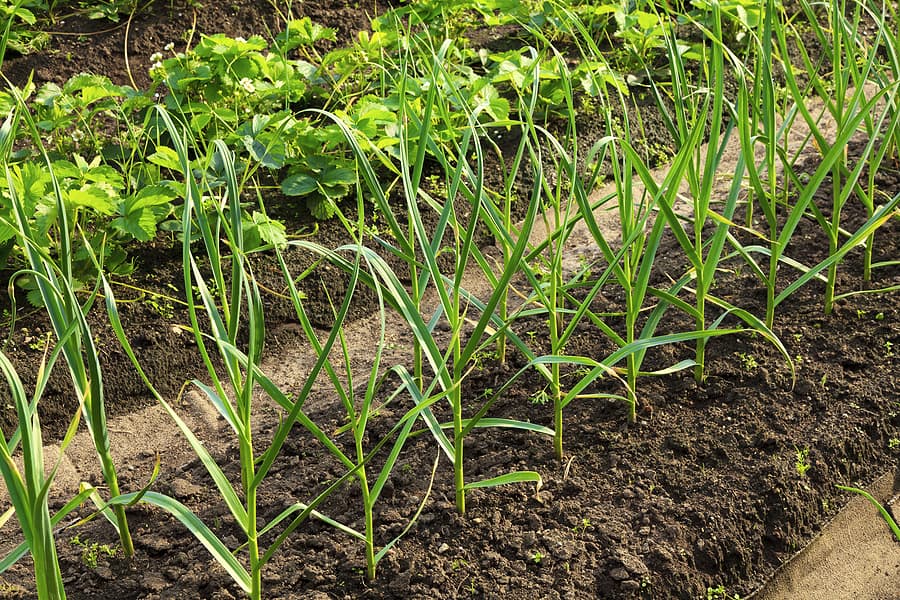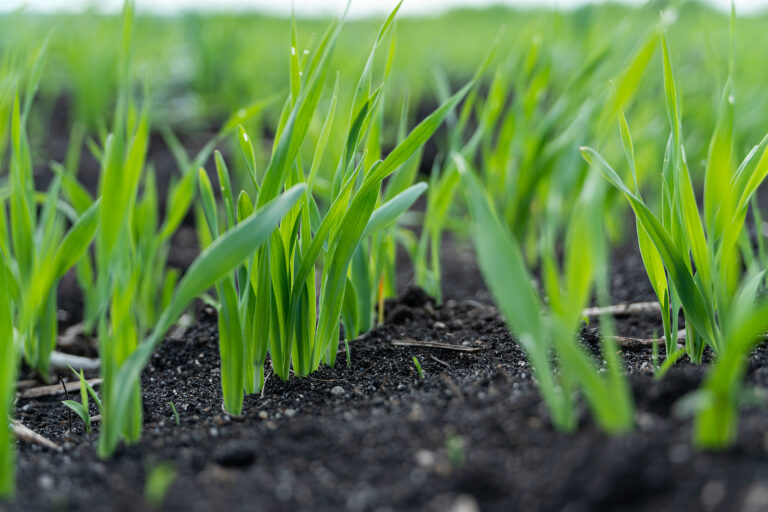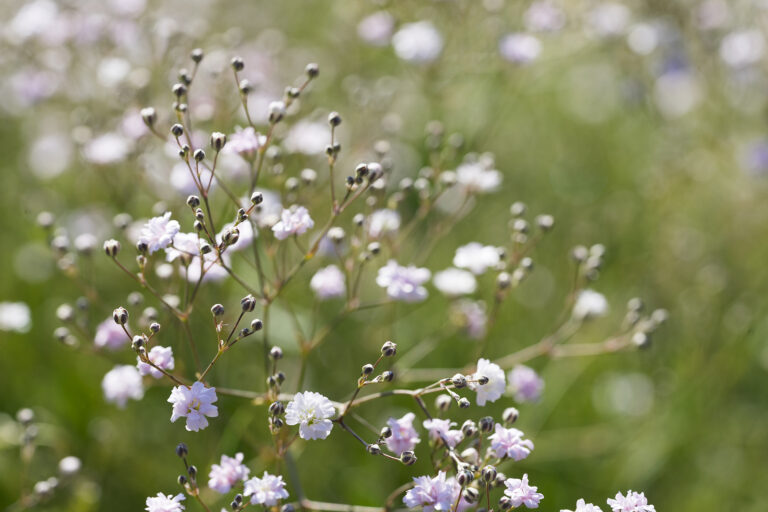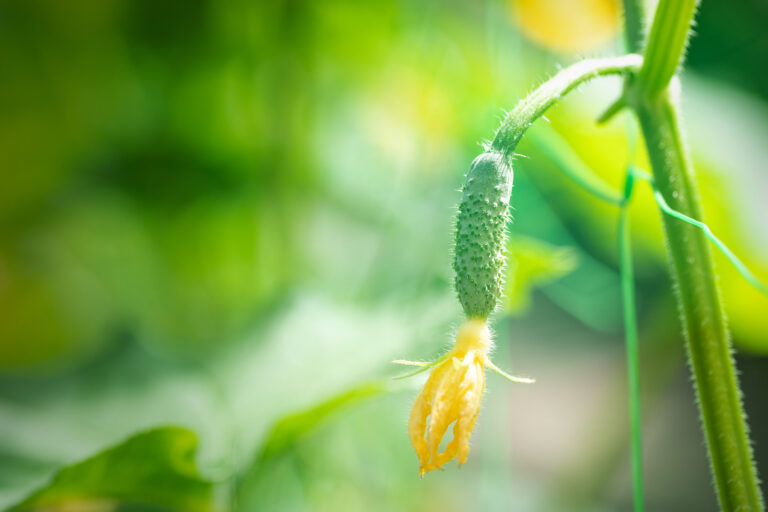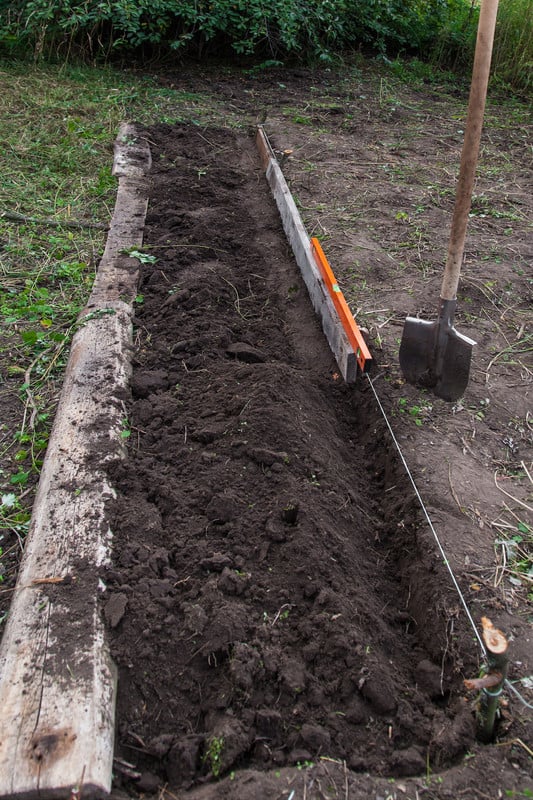Intensive Planting: Narrow Beds & Wide Rows – Harvest Table
A wide garden row in a narrow bed is ideal for growing leaf and small root crops. Wide rows are set across narrow beds. Narrow beds are planting beds that a gardener can reach into to tend crops without stepping on the soil.
Wide rows are set across narrow beds. Wide rows are ideal for very small-seeded vegetables—seeds that are more easily broadcast than sown tiny seed by tiny seed. Unlike single rows, wide rows allow for a greater harvest from less space.
For easy planting and maintenance grow lettuce, spinach, radishes, and carrots in wide rows the width of a standard 15-inch bow rake. A wide row also can be used for medium-sized crops such as cabbages, bush beans, and eggplants grown two across.
Garden Planning Books at Amazon:
- Vegetable Garden Almanac & Planner
- Kitchen Garden Grower’s Guide Vegetable Encyclopedia
- Tomato Grower’s Answer Book
- Vegetable Garden Grower’s Guide
While plants may not grow in a series of traditional rows with walking or workspace on each side for the gardener, wide rows–about the width of your arm–will allow for intensive planting. Intensive planting or cropping places multiple crops in the same bed; you can grow more crops in one bed saving on space and labor and increasing yield.
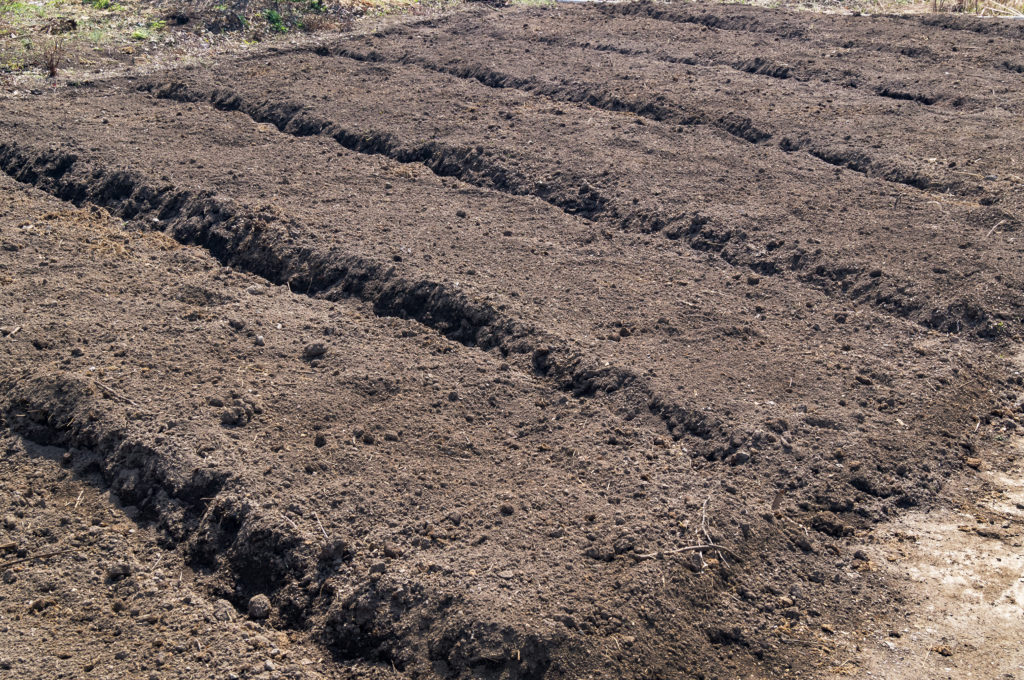
Narrow beds and wide rows
Planting beds—not traditional rows—offer the best use of space for growing a home vegetable garden.
Planting beds that space two, three, or more plants across a bed 1½ to 4 feet wide is ideal for a home garden. These beds are often called narrow beds—they are just wide enough for you, the garden keeper, to reach the center of the bed to plant, maintain, and harvest crops, but they are not so wide that you have to step into the bed.
Narrow growing beds make more room for plants in the garden. That makes sense in a small home garden where the space you would find between traditional farm rows is unnecessary; farmers need space between rows to operate tractors and cultivators, but even small mechanized equipment is rarely required for a home garden. Traditional furrowed rows are usually 3 or 4 inches across with 12 to 18 or more inches between rows.
Narrow planting beds
Wide planting beds, as you see in home landscapes, can be several feet or yards across—wide enough to grow shrubs and perennials. Narrow planting beds are just wide enough that you can reach into the bed from a path or paths on one or two sides without ever stepping into the bed. Stepping on fertile, prepared ground can compact soil and hurt your crop yield—something you want to avoid.
When you plan your garden, determine the width of each planting bed by how easy or difficult it will be to take care of the crops you plan to grow. It’s easy to reach across two, three, or even four rows of leaf lettuce, but more difficult to reach across two rows of cabbage or Brussels sprouts. The planting bed for four rows of lettuce might be 4 feet across—easy to reach the center of the bed from either side. The bed for Brussels sprouts might be just 3 feet across, each plant staggered to get more plants into the bed, and also easily worked from either side.
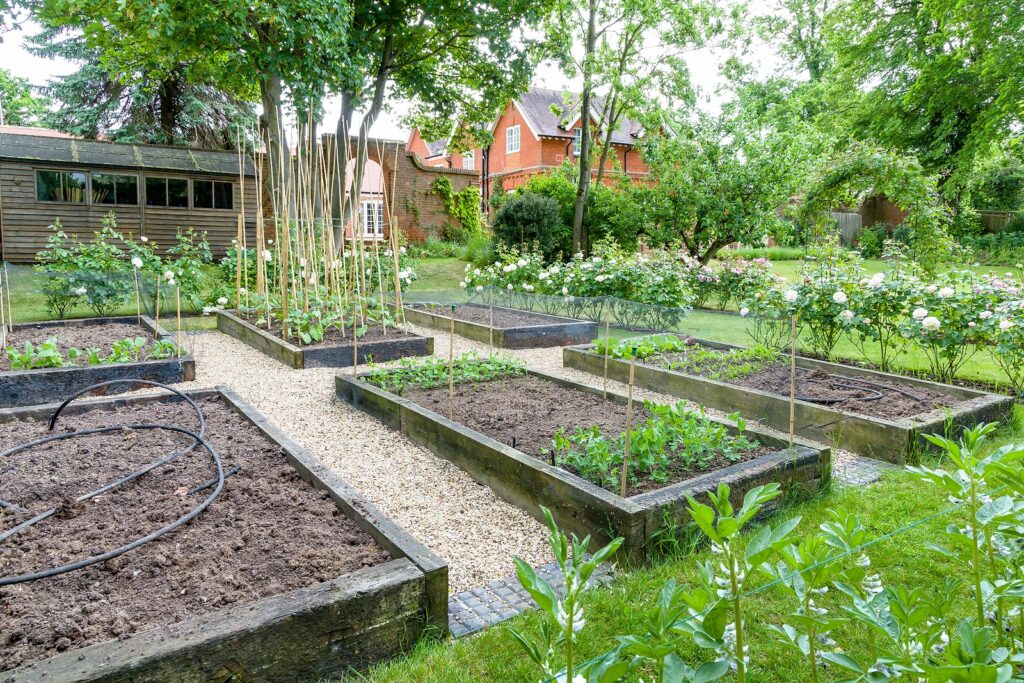
How to use narrow beds and wide rows
When planning crop spacing for your narrow beds, put low-growing crops next to each other in the same bed, or if there is a path on either side of the planting bed reserve one side for low crops and the opposite side for taller crops. For example, if you plan to grow both tomatoes and lettuce, plant the tomatoes on the sunny south or west side of the bed and the lettuce on the opposite side of the bed under the afternoon shade of the taller crop.
By using narrow planting beds, you will need less room in your garden for paths, and you can optimize your growing space. Once you begin to sow seed or set out transplants in a narrow bed, you will soon find that you can abandon row planting altogether. If you stagger seeds or plants across a narrow bed—imagine one plant at each of the four corners of a square with one in the center—you can easily increase your planted space by 33 percent. Equidistant, staggered planting is commonly called intensive planting–that is seeds or plants are set in the garden so that the leaves of mature plants touch each of the surrounding plants.
Narrow planting bed advantages
Narrow planting beds allow for the concentration of fertilizers, compost, and water; you will apply plant food only to the growing space, not across the greater garden. A bed 3- to 4 feet wide can be fertilized, planted, weeded, and harvested from either side without walking on the bed.
The soil in a bed remains loose, optimal for growing vegetables; it is never stepped on or compacted. A single footstep can exert pressure of as much as 10 pounds per square inch—root hairs that absorb moisture and nutrients can be damaged or destroyed when the soil is compacted. Compacted soil can contain all of the nutrients and moisture plants need but the nutrients and moisture may not be available to plants in soil that have been compacted. Beneficial soil microbes and earthworms also can be disturbed or destroyed when the soil is compacted.
The space for plants to grow and the space for the gardener to walk are clearly defined once narrow beds are in place. These planting beds can be used again next year; you can rotate crops from bed to bed. You won’t have to re-till or cultivate the entire garden each year. Pathways can be lined with hay, straw, gravel, or stepping stones. Mulched walkways and work areas protect the soil from compaction.
Narrow beds increase the growing space in a garden. A narrow bed can be planted in rows but also easily lends itself to equidistant spacing or intensive planting. Seeds or transplants can be set in the garden equidistant from one another—staggered—so that the mature leaves of adjacent plants touch, forming a dense canopy. Equidistant planting not only allows for more plants but ultimately forms a dense canopy over the soil which deprives weeds of the light needed to grow and also conserves water by slowing soil moisture evaporation.
Narrow beds can be raised above the surrounding ground surface—just mound the soil into the bed or place a wood or stone frame around each bed. Mounded or raised beds make stooping unnecessary. Raised and mounded beds warm more quickly in spring and are well-drained.
How to create a wide-row garden bed
• Instead of creating a narrow mounded single seed row, mound soil up the width of a steel bow rake—12 to 18 inches across. Allow a traditional furrow on either side for deep watering—a wide row is ideal for overhead irrigation as you might water lettuce or spinach.
• Rake flat and smooth the wide row—make sure dirt clods are eliminated. If your wide row is just 4 to 6 inches taller than the surrounding area, the soil will warm quicker in spring, hold solar heat throughout the season, and be well drained. These are ideal conditions for vegetable growing.
• Decide what you are going to plant in your wide bed. It may be one crop; that will make seed or transplant spacing easy—sow seed or set starts so that their leaves are just touching at maturity. If you are growing multiple crops in the wide bed, vary spacing so that each plant is given enough space to reach its mature size.
Good Products at Amazon for Raised Bed Growing
- Galvanized Raised Bed 8×3
- Cedar Raised Bed 4×8
- Elevated Cedar Planter 4×2
- Walk-In Greenhouse Tunnel 15x7x7
- Row Cover for Freeze Protection 10×30
• Broadcast—meaning to cast broadly—seed across the top of the bed. You may literally throw seed across the bed (thinning seedlings will follow in a few weeks) or you may systematically sow seed in a grid or pattern across the row. Make sure a thin layer of planting mix covers the seed and gently water the seed in. For best germination, the soil should come in contact with the seed; before watering, some gardeners use a wide board to press the soil covering the seed.
Set transplants or vegetable starts across the bed in a double row or in a 2-1-2 pattern. Consider the size of each plant at maturity, then use plant stakes or small sticks to arrange the planting pattern for the most efficient use of space and increase yield per square foot.
• Interplant quicker-growing crops between slower-growing crops for the most efficient use of space and time. For example, you can grow a lettuce transplant between two cabbage plants. The lettuce will be ready for harvest in 30 to 40 days; the slower-growing cabbages which require 60 or more days to harvest will just be spreading their leaves when the lettuce in between is harvested.
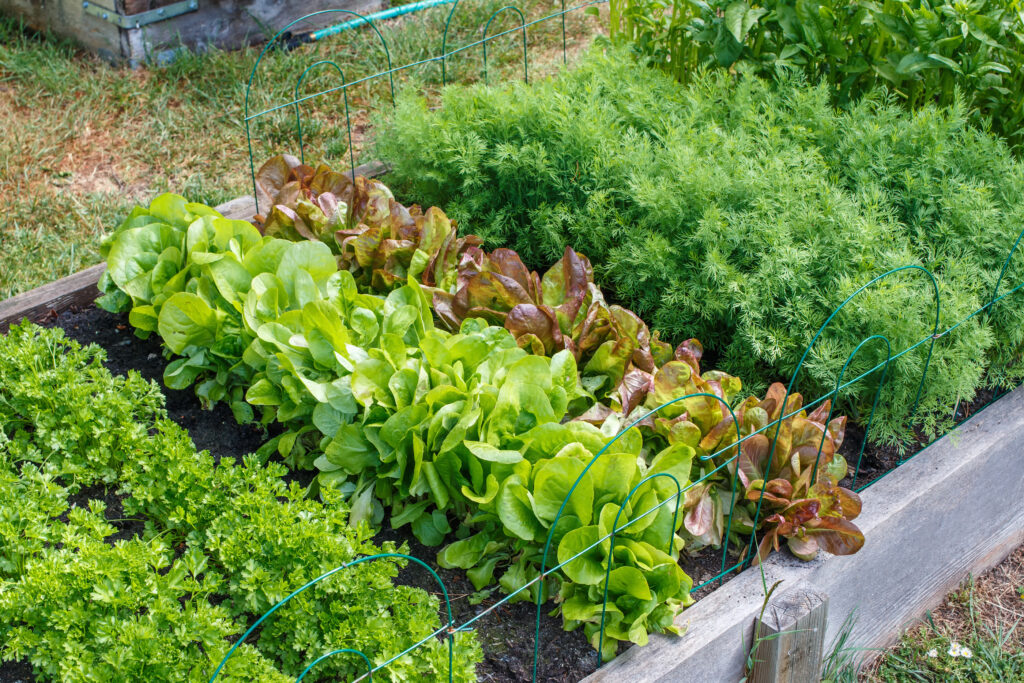
Wide row garden beds advantages
• Seeds are sown more quickly. Wide beds allow for broadcasting seed rather than sowing seed-by-seed in a single row.
• Plants growing next to each other in a wide row will grow close and their leaves will just touch at maturity. As the plants grow, their leaves shade the bed and weeds are deprived of sunlight—that means little or no weeding.
• Close growing crops shade the soil providing “living mulch”—the shaded soil stays cool and less soil moisture evaporates from the growing bed; watering is reduced.
• Wide beds are easy to maintain; you are within arm’s reach of each crop for weeding, feeding, watering, and harvesting. Make sure the wide row is not so long that it becomes a chore to walk around to the other side.
Good Products at Amazon for Seed Starting Success:
- Jump Start Germination Station w/Heat Mat Tray, 72-Cell Pack, Dome
- Espoma Seed Starting Mix
- 200 Count- Jiffy 7 Peat Soil Seed Starting Plugs
- Seed Starter Kit with Humidity Dome (120 Cells Total Tray)
- AgrobriteT5 Fluorescent, 2-Foot, Grow Light System
• Plants growing close to each other can support each other. Bush beans or peas planted in double rows or a 2-1-2 pattern will support each other as they grow. This will keep pods off the soil and reduce crop loss.
• Quick crop growth; intensively planted crops will compete for nutrients and water and often grow more quickly. Intensively planted crops do not compete with weeds for nutrients and water. Fertilizers and water are more efficiently used and not wasted on single-row growing crops.
• You will harvest more vegetables from less space and if you interplant you will grow and harvest multiple crops in less time.
Wide beds are not right for all crops. Crops that require extra support or extra space to grow are not always the best candidates for wide beds. Potatoes, tomatoes, corn, melons, squash, and cucumbers are best planted in single rows or on mounds. Trellised crops like climbing peas and cucumbers are more easily grown in conventional rows. If your garden is very large and you require the assistance of mechanized equipment, rows may be the best choice.
Vegetables for narrow beds and wide rows
There are more than two dozen vegetable crops well-suited for planting in narrow beds, also called wide rows.
A wide row—or narrow bed—is about 3 feet across, never wider than you can reach to the center of the bed from one side or the other. The wide row-narrow bed means you will never have to step in the bed and compact the soil.
This method insure you will get more production from less space, simply because plants grow within a few inches of each other—sow seed or set transplants equidistant from one another so that their leaves just touch at maturity. Plants do not compete for sun or water, and this method does not require extra space for walking between rows of single-spaced individual plants. (Traditional single-line straight row planting may be suited for tractor farming, but means only a skimpy harvest in the home garden.)
Here are more than two dozen crops suited for planting in narrow beds-wide rows. Also listed are the recommended number of inches between the center of each plant—set each plant equidistant from the surrounding plants:
- Beans: 4-6”
- Beets: 2-4”
- Cabbage: 15”
- Carrots: 2”
- Cauliflower: 15”
- Celery: 6-8”
- Chard: 8-12”
- Chinese cabbage: 12-18”
- Collards: 15-18”
- Endive: 6-12”
- English peas: 4-6”
- Garlic: 4-8”
- Kale: 12”
- Kohlrabi: 5-8”
- Leeks: 6”
- Lettuce: 6-9”
- Mustard: 4-6”
- Onions: 3-5”
- Parsley: 6-8”
- Parsnips: 3-4”
- Peppers: 24”
- Radishes: 2-4”
- Rutabagas: 6-8”
- Southern peas: 6”
- Spinach: 4-6”
- Turnips: 2-6”
Related Articles:
Starting Your Organic Vegetable Garden
Estimating Yields of Vegetable Crops–Basics
How Big Should Your Vegetable Garden Be
Narrow Beds, Not Rows, For Planting
How to Start A Vegetable Garden
Garden Planning Books at Amazon:

